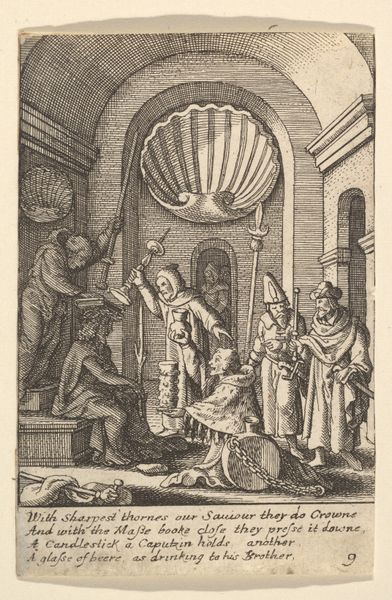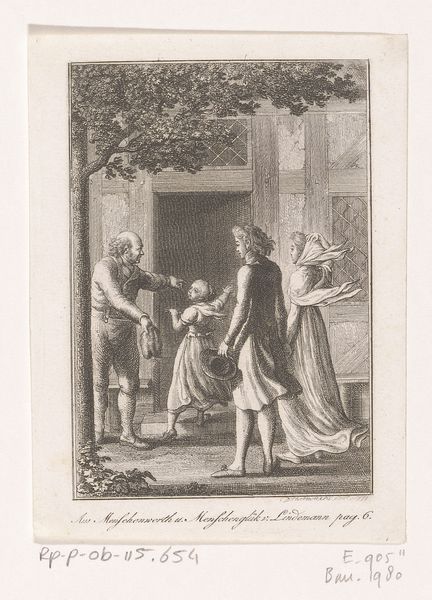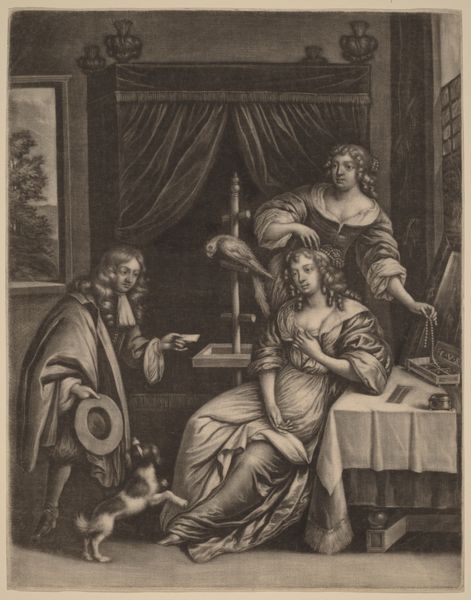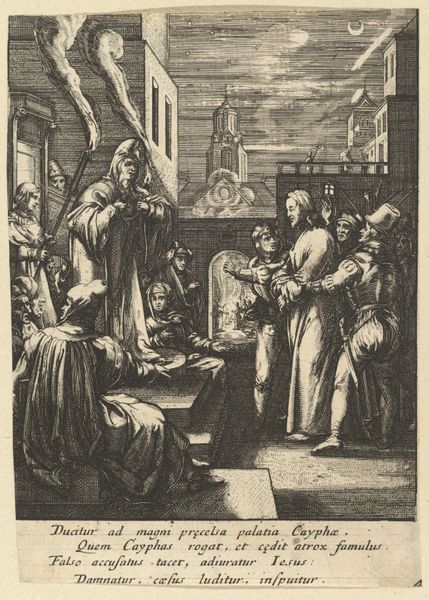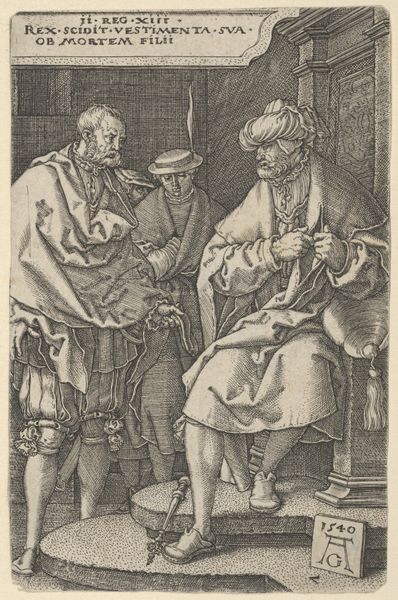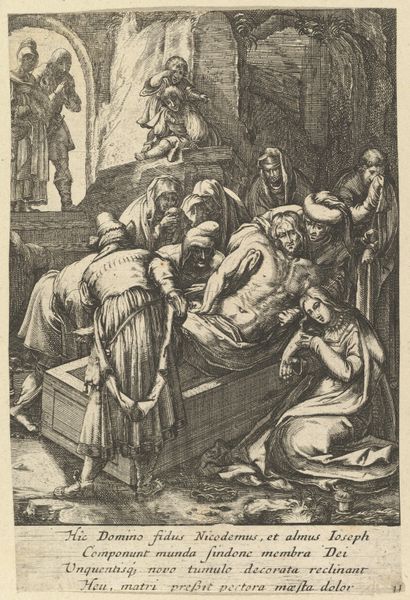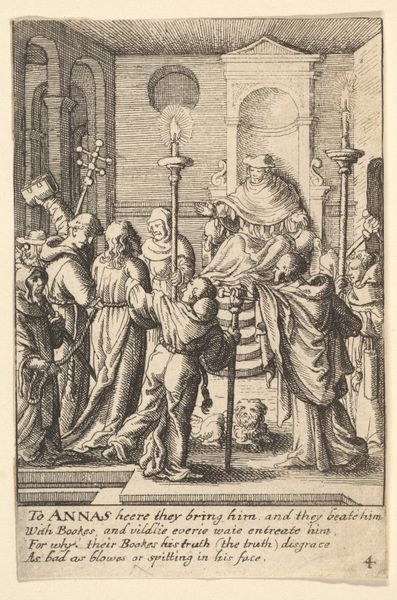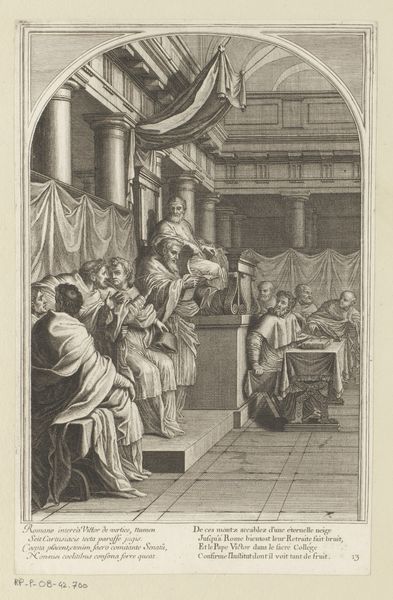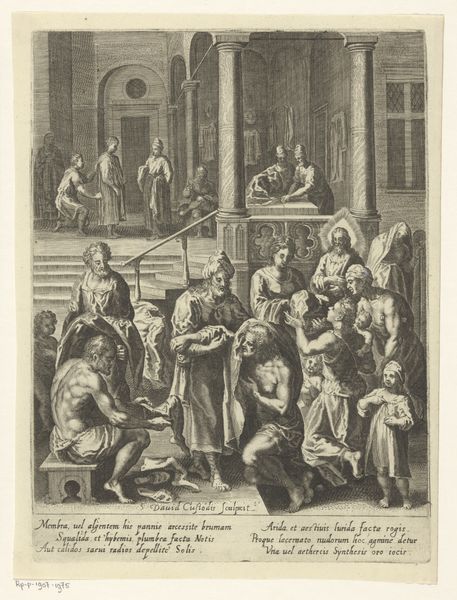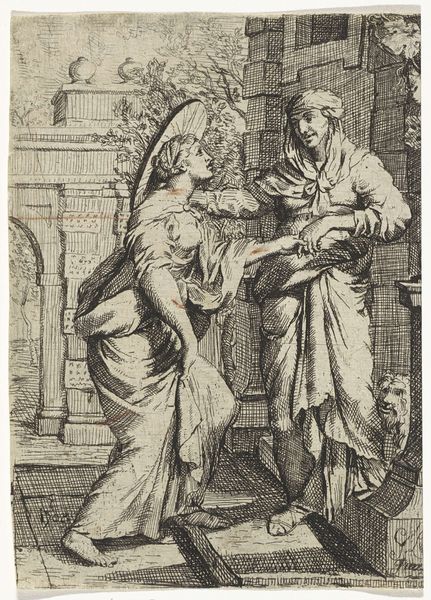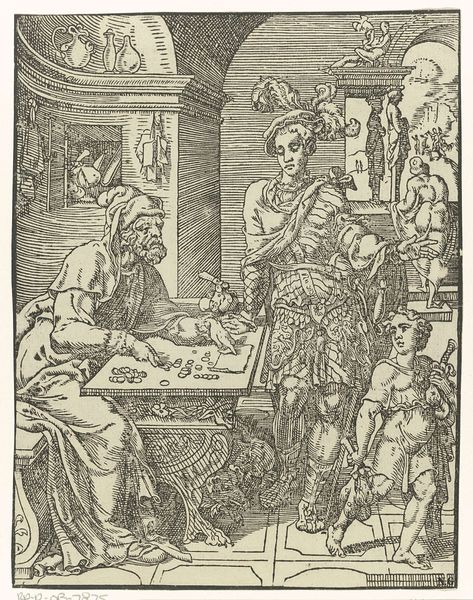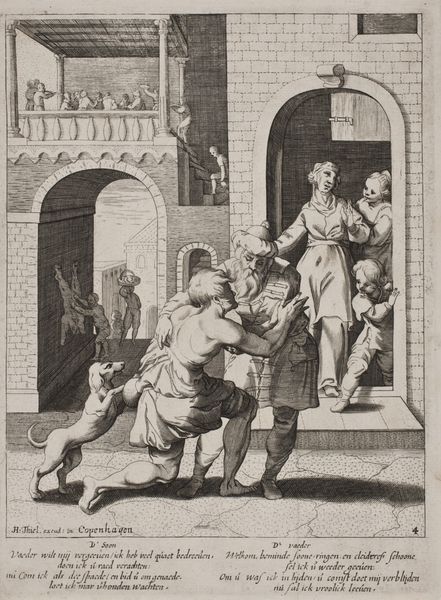
The soldier kissing the woman's hand (from John Ogilby, "Aesopics or a Second Colllection of Fables," 1668) 1666
0:00
0:00
drawing, print, engraving
#
drawing
#
baroque
# print
#
figuration
#
soldier
#
men
#
genre-painting
#
history-painting
#
engraving
Dimensions: Sheet: 5 5/8 × 3 3/4 in. (14.3 × 9.5 cm) cut within t he platemark
Copyright: Public Domain
Curator: Wenceslaus Hollar, a prolific printmaker, created "The soldier kissing the woman's hand" around 1666. The engraving depicts a genre scene infused with the sensibilities of history painting from that era. Editor: The composition really strikes me. Everything's so still, but you feel a latent story hovering in the air, and I think that sensation owes so much to Hollar's sharp, deliberate engraving. The lines create the texture so skillfully. Curator: Note the details; observe how the soldier is kneeling, a classical gesture denoting deference, reverence even, towards the woman. And how is the gesture is received? This small, human interaction echoes a grander societal dynamic, particularly around power and social status in seventeenth-century Europe. The scene hints at an underlying fable or moral lesson, reflecting its publication within John Ogilby’s collection. Editor: Absolutely, it highlights the cultural practice of storytelling through images at the time. Let’s not overlook the artistry involved here; The material reality of the print – the ink, paper, labor, and its function as illustration -- underscores a complex system of artisanal skill and literary patronage of the 17th century. We also have to remember, that during that period, the very act of printing and circulating such images contributed significantly to shaping popular consciousness and the dissemination of both literal and symbolic visual language. Curator: The very controlled marks remind the viewer about decorum and restraint that structured the social order then. But the open book near the seated woman at the back of the room acts as a window into potential alternative narratives and knowledges. The print shows an intimate moment—a charged, yet quiet transfer of respect and also longing. Editor: Considering its origin as a book illustration for "Aesopics," understanding the historical context becomes paramount. It speaks to a growing reading public who was keen to absorb social and political messaging woven through moral tales, subtly reinforced the ruling class's ideals and sense of legitimacy through its consumption of media. It’s about controlling ideas through materiality. Curator: An intersection, I would argue, between narrative and object – reflecting and shaping beliefs about honor, obligation, and societal expectations. Editor: Yes, each carefully placed line adds to the rich symbolism in this print while alluding to social realities. I’ll walk away contemplating the cultural memory inherent in these illustrative materials.
Comments
No comments
Be the first to comment and join the conversation on the ultimate creative platform.
